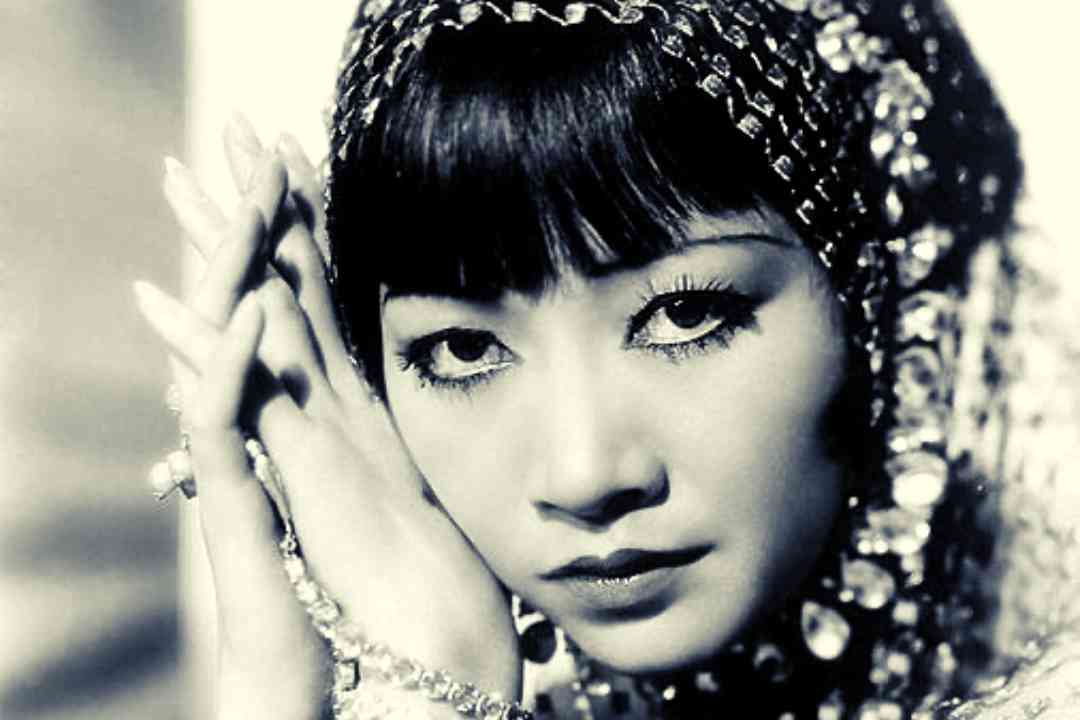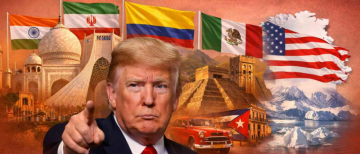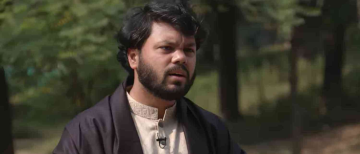Honouring the first Asian-American Hollywood star, Anna May Wong, a century after her first leading role, the U.S. mint released coins on 24th October of this year in their “American Women Quarters” which pay homage to extraordinary women from the US whose cultural and historical contributions remain inscribed with gold in the pages of American history.
Designed by Program Designer Emily Damstra and sculpted by artist John McGraw, there shall be 300 million coins of her likeness produced in Denver, San Francisco and Philadelphia. The reverse side shall feature Anna May Wong’s close-up head resting on her manicured hands- with her iconic features- the trademark blunt bangs and the pencil-thin eyebrows surrounded by the bright lights of a marquee. The obverse (head) shall have George Washington’s portrait engraved on it, composed by Laura Gardin Fraser in 1932. Emily states that her design represents Wong’s hard work, skill and expressive gestures that captivated the audience. Director Gibson said, “I am proud that the new obverse design of George Washington is by one of the most prolific female sculptors of the early 20th century.”
The trademark characteristics of Anna Wong on a coin featuring her (USmint.com)
She was chosen for being “a courageous advocate who championed increased representation and more multi-dimensional roles for Asian American actors. This quarter is designed to reflect the breadth and depth of accomplishments by Anna May Wong, who overcame challenges and obstacles she faced during her lifetime,” Mint Director Gibson stated. Other icons being featured are- writer Maya D’ Angelou; Dr Sally Ride, an educator and the first American woman in space; Wilma Mankiller, the first female elected principal chief of the Cherokee Nation; and Nina Otero-Warren, a trailblazer for New Mexico’s suffrage movement.
When the Mint’s head legal consul contacted the legend’s niece, named Anna Wong after her aunt- she was thrilled, to say the least. Bing Chen, co-founder of the nonprofit Gold House expressed- “In a slate of years when Asian women have faced extensive challenges — this currency reinforces what many of us have known all along: (they’re) here and worthy,”. Arthur Dong, the author of “Hollywood Chinese” said, “What it means is that people all across the nation — and my guess is around the world — will see her face and see her name. If they don’t know anything about her, they will ... be curious and want to learn something about her.”
The coin in circulation (USmint.com)
To bring to life the meaning that Mr Arthur Dong stated, "We delved deep into Anna May Wong’s life and career. Her prowess was not limited to being an actress. She did theatre, and radio and also became a fashion icon."
Obsessed with the industry since the age of 9, she was nicknamed the Curious Chinese Child. The disengagement from her studies bothered her parents but she knew what she wanted. Her first film as an extra was “the Red Lantern” and she landed her first leading role at the ripe age of 17 in “The Thief of Baghdad”. She soon quit her studies and pursued acting full-time.
The New York Times commented on the ‘Toll of the Sea’, "She has a difficult role, a role that is botched nine times out of ten, but hers is the tenth performance. Completely unconscious of the camera, with a fine sense of proportion and remarkable pantomimic accuracy ... She should be seen again and often on the screen." This was heeded by the producers who definitely capitalised on her talent- by giving her meagre supporting roles. Her brief appearances as the typeface “dragon lady” got applauded by critics and audience soon.
1924 saw her attempt to open a production house that dissolved due to her filing a lawsuit against her partner for conducting dishonest practices. The stunted opportunities urged her to leave for Europe where she quickly became a sensation. The german critics called her a woman with transcendent talent and great beauty. Even composer Constant Lambert, with infatuation, dedicated the Eight poems of Li to her. For her last silent film Piccadilly, Variety commented- "from the moment Miss Wong dances in the kitchen's rear, she steals 'Piccadilly' from Miss Gray."
Wong in Piccadilly (themoviedb.org)
She was further featured in movies from 1930 with mastered fluency in multiple languages. She entered into a contract with Paramount for lead roles in 1930. Using small-budget, bold films- she portrayed successful and positive Chinese characters. Through her films, public appearances and prominent magazine features, she helped to humanize Chinese Americans to mainstream American audiences during a period of intense racism and discrimination. Paramount also employed Wong as a tutor to other actors.
The Daughter of Shanghai was given the title “Anna May Wong Story” because it was rewritten for her and carefully tailored to make her the heroine, setting the plot into motion rather than the passive character originally planned.
Anna May Wong in Daughter of Shanghai (sixthtone.com)
Wong was a clear advocate and also openly protested against the villainous roles offered to those of Chinese descent.
Anna May Wong in an exotic costume and headdress (sixthtone.com)
Despite her talent and beauty being praised by multiple critics, her journey of fame saw many thorns along the path. Hollywood's Asian female characters tended toward two stereotypical poles: the naïve and self-sacrificing "Butterfly" and the sly and deceitful "Dragon Lady". Refused to be offered prominent roles by the Hollywood that she admired so much and forsaken by her own country for presenting such representations of the chinese people, she was left alone. Much shame and insults were hurled upon her by people of her own nation and headlines like- "Paramount Utilizes Anna May Wong to Produce Picture to Disgrace China. Although she is deficient in artistic portrayal, she has done more than enough to disgrace the Chinese race." were circulated. Her affiliations and friendships with female actresses was viewed with suspicion and she was termed a lesbian which for her nation, became a reason for supposed shame.
Her father in 1934, expressed his pride for his daughter in a brief article for Xinning Magazine. She pushed back her career to prioritise the nation during World War 2, auctioning off her movie costumes, proceeds from her Chinese cookbook, and all her money and efforts dedicated to the aid of the Chinese cause against Japan.
The deep-rooted prejudices of Hollywood soon became quicksand for actors hailing from other ethnicities. The studios would accept “yellow-faced” Americans rather than choose actors matching the ethnic background of the character to be played.
Despite Wong serving looks, expressions, talent and love for the industry- what was served to her on a decorated plate was disappointment when her desire to star in the film version of Pearl S. Buck's The Good Earth was rejected. MGM chose both Chinese leads to be yellow-faced White actors, an ironic and controversial casting decision. The choice might have been due to the anti-miscegenation laws prohibiting intimacy between interracial couples, which played the role of a disgustingly constant roadblock in her long career. She was instead offered the role of a sex worker but she declined.
In the 1950s, her television appearances became common and popular- The Gallery of Madame Liu-Tsong was the first ever show to have an Asian- American series lead. She received a Walk of Fame star in the 1960s, a year before her death at the age of 56. When Lucy Liu became the second Asian American woman to do so in 2019, she eulogised Wong for being “a pioneer while enduring racism, marginalisation, and exclusion,” The Guardian reported.
(blog.brotishnewspaperarchive.co.in)
Her legacy continues with the Anna May Award of Excellence. Vogue, with no hesitation, lists her as a source of inspiration and designers like Dior find her to be their muse. She remains alive in illustrations, literature, references and series. A biopic of the actor's life, which will see her portrayed by Gemma Chan, an actress who reflects the same struggles, is currently in production. Chan's father initially did not want her to be a professional actress, partially because performers of Asian descent seldom had the opportunity to break into the industry. But Chan walks on the footprints left by Anna May Wong and continues her legacy.
Miss Anna May Wong stated to local Tokyo reporters that she has married her art, her statement was butchered and published as, “ Anna May Wong married to a Cantonese man named art”. She justifies her birth name Wong Liu Tsong- meaning “frosted yellow willows”.
Standing tall with persistence in a harsh atmosphere and withstanding hardships, blooming into a symbol representing the longevity of art. Like the willows of a butterfly garden, she flitted around offering wings to people of her ethnicity. She stands as an icon of revival like the willow and brings good fortune to the industry with her legacy.
© Vygr Media Private Limited 2022. All Rights Reserved.























